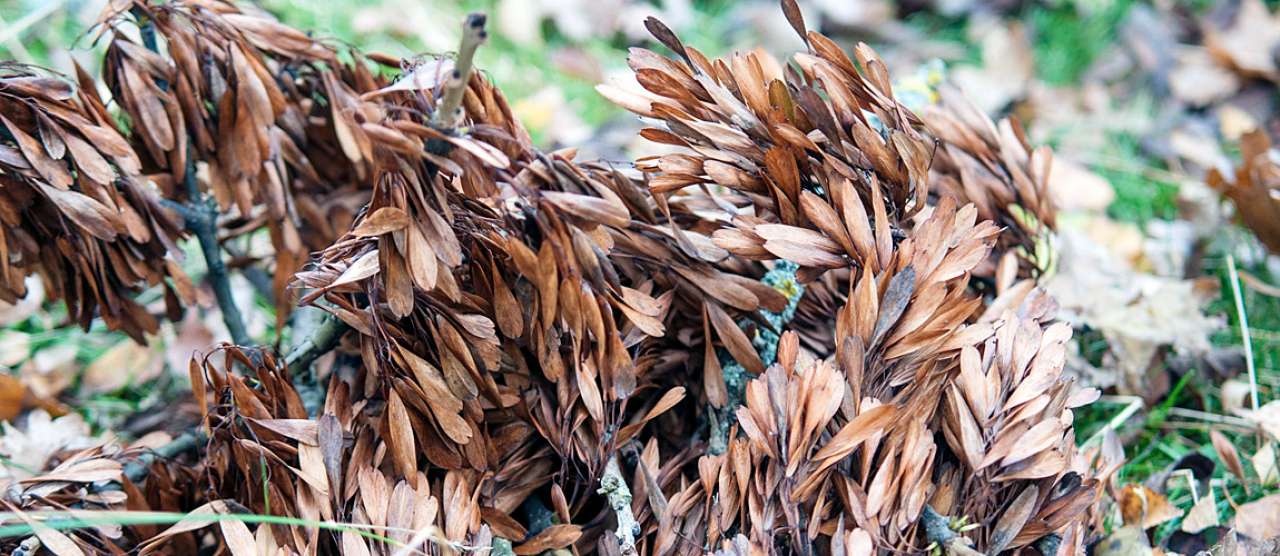Scientists collect seeds from healthy ash trees

Photo: Lars Sandved Dalen.
Ash dieback came to Norway in 2008 and has so far attacked ash trees along the coast from Østfold to Nordmøre. Now forest scientists collect ash seeds to save future generations of ash from fungal attack.
Ash dieback threatens ash trees in large parts of Europe, including Norway. Since 2008, thousands of Norwegian ash trees have been attacked by ash dieback; however, some ash trees appear to be more resistant to fungal attack than others. Researchers therefore want to collect seeds from healthy ash trees.
NIBIO biologist Mari Mette Tollefsrud works with tree genetics and is one of the scientists who participate in this rescue work. The scientists have selected healthy trees from different places in East Norway, South Norway and West Norway.
After collection the seeds germinate and are planted out to expose them to natural infection of the fungus Hymenoscyphus fraxineus.
"Hopefully, the collected seeds will give healthier and more resilient ash trees. It is important to protect the trees that stay healthy and collect seeds that can give rise to healthy trees", explains Tollefsrud.
Forest scientist and fungus expert Halvor Solheim at NIBIO has done research on ash dieback for several years.
"We have followed the movements of ash dieback each summer for the last six years. Now it has come as far north as Nordmøre. In Europe it is spreading ever further south and west", says Solheim.
Ash dieback establishes itself on the leaves and petioles. If ash dieback gets past the node before autumn leaf-fall, it will grow in the branches and trunk during the tree's dormant period in autumn and winter. Next summer, the infected shoots are dead. Young ash trees die quickly, while older trees can survive for many years.
It is the fungus Hymenoscyphus fraxineus that causes ash dieback. There are no measures that can prevent the spread and further development of the disease.
Contacts

Contacts

